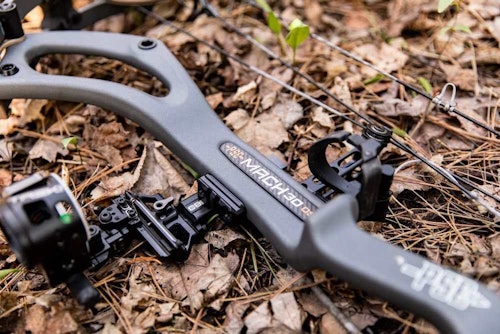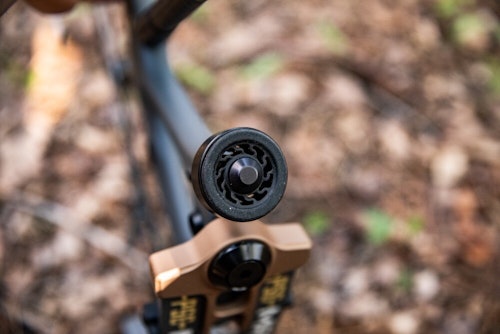While I’m usually open to trying out something new, familiarity is always reassuring and confidence-sparking. I’m sure most of you can relate, and in no other archery product category is it truer than compound bows. Just like a time-worn tractor or a proven deer stand, a familiar bow brand instills irreplaceable confidence on the shooting line and in the timber.
PSE Archery is about as familiar to the archery community as Kraft is to grocery stores. Just about everyone I know who has been shooting a bow for any length of time either owns or has owned a PSE bow. It isn’t the oldest bow company, but nevertheless, it is older than most with a 1970 inception under the direction of archery industry great, Pete Shepley.
Recently, I had the pleasure of testing PSE’s latest carbon offering, the Mach 30 DS. Carbon is nothing new at PSE, but prior to the Mach 30 DS, I hadn’t tested and reviewed any PSE carbon bows, only its machined bows. After spending some time with it, I’ll say this: If you haven’t put your hands on the Mach 30 DS, you’re in for a treat.
Test Bow Specs
- Axle-to-Axle Length: 30 inches
- Brace Height: 6 inches
- Draw Length: 28 inches
- Draw Weight: 70.7 pounds
- Let-off: 80%-90% (tested at 80%)
- Bow-only Weight: 3.6 pounds
- Accessorized Total Weight: 5.5 pounds (including sight, rest and front stabilizer)
- Velocity: 276 fps (with 468-grain Easton 6.5mm Acu-Carbon 340 arrow); 279 (with 456-grain CX Maxima Triad 350 arrow); 282 (with 441-grain Victory VAP SS 350 arrow)
- Kinetic Energy: 79.18 foot-pounds (Easton); 78.84 foot-pounds (CX); 77.89 foot-pounds (Victory)
- Test-Bow Finish: Charcoal
- MSRP: $1,799
- contact: www.psearchery.com
Stability That Will Floor You
The last PSE bow I tested was the EVO XF 33. Given its 33-inch length, the stability was outstanding. I’ll admit my expectations were lower for the Mach 30 DS. I mean, the bow’s only 30 inches and weighs next to nothing. When I first started shooting it, though, I felt so much stability that it didn’t make sense. Regardless if I shot it at 20 or 60 yards, my pin basically anchored in one place and hardly floated as I aimed and executed my shots. Hands down, it outaims all bows in its size class, plus some that are longer. Period.
Now, I’m not swayed by others’ opinions in regard to bow technology or performance, but I wondered whether or not other bow reviewers noticed likewise. On YouTube, I quickly learned that the Mach 30 DS won Outdoor Life’s annual bow test, which included eight other bows. It wasn’t the quietest or most vibration-free bow, but its stability and grouping capabilities put it in the lead.
How does PSE accomplish unparalleled stability in such a short and lightweight platform? Full Draw Stability. This technology isn’t fancy marketing fluff. It provides real results by actively diminishing hand torque at full draw, which alleviates the lateral pin jitters and smooths out pin float, not to mention it allows for consistently cleaner arrow departure.
The Mach 30 DS also has a string angle comparable to a longer axle-to-axle bow, and it makes peep and target acquisition faster and more comfortable to tackle. I outfitted it with a simple HHA stabilizer — it also comes standard with a weight/dampener combo located just above the bottom limb pocket — and it holds like a dream.

Smooth as Butter
I know I’ve said this about other bows, but the Mach 30 DS’s EC2 Cam is ridiculously smooth. In fact, it delivers perhaps the best draw cycle of any bow I’ve recently tested, and the transition from peak to valley is very even. It’s awesome. Friction during the draw cycle is further smoothed out by the Mach 30 DS’s roller guard. I shot the test bow at 80% let-off, and it felt great at full draw while aiming, but it was easy to let down. I saw no need to test it at 90% because 80% felt so great, but the option exists for those who want the additional let-off. The cam also adjusts from 24.5-30 inches.
The Mach 30 DS also shoots smoothly and quietly. Carbon is notorious for hand shock, but PSE’s Dead Frequency Carbon is light yet stiff, which makes the bow lightweight while pushing the limits in strength to avert flexing at the shot, thus reducing vibrations.
The Dead Frequency Carbon riser is also one piece and not needlessly overdone with fancy curves and lines. Still, it boasts a futuristic appearance any bowhunter could proudly carry afield or around a 3-D course.

Mounts and Tuning
Like most new flagship bows for 2024, the PSE Mach 30 DS features current accessory mounts. It can be rigged with an Integrate Mounting System-compatible rest or a conventional rest. It also has the option for Picatinny or conventional sight mounting. These mounting systems create a more rigid and seamless connection while eliminating traditional sight and rest brackets, which reduces accessory weight while also positioning the accessories in a way that they don’t need to be counterbalanced with fancy sidebar stabilizers.
To simplify tuning, PSE rigs the Mach 30 DS with its EZ.220 Snap Spacer. Although changing these spacers requires the bow to be pressed — one minor downside — it is fast and easy to install different spacers to shift the cam in precise .02-inch increments. That might seem like splitting hairs, but a $1,799 price tag warrants such precision.

Final Thoughts
While shooting the Mach 30 DS from various distances out to 60 yards, I felt superb comfort. I could relax and enjoy the shot process without being distracted by petty little annoyances because there are none. From drawing back to releasing the arrow, shooting the PSE Mach 30 DS provides a stunning experience you have to feel to believe.
It doesn’t set any speed records, but it is so accurate it doesn’t have to. It’s the bow you’d want if you had to thread the needle through some aspens to connect on a dream bull. And, with a 338-fps rating, it’s plenty fast and right there with most flagship bows.
The Mach 30 DS draws smoothly. It’s unbelievably stable yet compact. It is quiet and virtually free of vibrations. It has an ultra-comfortable grip. It delivers a quick, accurate arrow. It looks awesome. I believe I’ve just described the ultimate hunting bow.
Editor's note: Click here to watch Darron McDougal's 4-minute YouTube video review of the PSE Mach 30 DS.
Additional Notes: The PSE Mach 30 DS was set up using a Last Chance Archery EZ Green Bow Press and EZ Green Bow Vise, and the draw weight was calculated using Last Chance Archery’s Digital Bow Scale. A Caldwell Ballistic Precision Chronograph measured the arrow velocities. Other products used were Easton’s Nock and D-Loop Pliers and Pro Hex Fold-Up Allen Set. Arrows were weighed on Last Chance Archery’s Pro Grain Scale.
In-the-field photos by Becca and Darron McDougal







